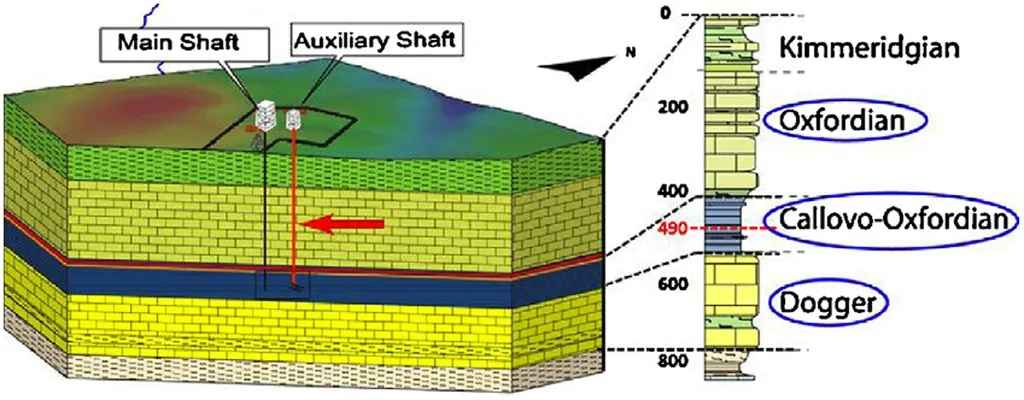In the realm of geotechnical engineering and nuclear waste disposal, understanding the behavior of clay barriers is paramount. A recent study published in the *Advances in Civil Engineering* (translated from its original Chinese title) has shed new light on the molecular dynamics of montmorillonite (MMT), a type of clay, and its interactions with various ions. Led by Lianfei Kuang from the State Key Laboratory of Intelligent Construction and Health Operation and Maintenance of Deep Underground Engineering, the research delves into the swelling behavior, hydration mechanisms, and mobility of interlayer species in Na-, Cs-, and Ca-montmorillonite.
The study employed classical molecular dynamics (MD) simulations to investigate the behavior of hydrated MMT over a wide range of water contents. The findings reveal that hydrated MMT exhibits an initial stepwise crystalline swelling, followed by an approximately linear osmotic swelling phase. This understanding is crucial for applications in nuclear waste disposal, where the swelling behavior of clay barriers can significantly impact their effectiveness.
One of the most striking findings is the role of different cations in inhibiting or promoting MMT swelling. “Cs+ ions effectively inhibit MMT swelling, which is advantageous for nuclear waste disposal,” Kuang explains. In contrast, Na+ and Ca2+ promote swelling to varying extents, with Ca2+ having the most pronounced effect. This insight could inform the selection of materials for nuclear waste disposal sites, potentially enhancing their safety and longevity.
The research also provides a deeper understanding of the structural dynamics within the clay. Interlayer water molecules preferentially form hydrogen bonds with adjacent bridging oxygen atoms, and the average hydrogen bond number in the interlayer exceeds that of bulk water. This indicates stronger aggregation within the clay structure. At thermodynamic equilibrium, the system attains a stable state characterized by local maximum density and minimal atomic free volume, with the density of interlayer water slightly exceeding that of bulk water.
The mobility of interlayer species is significantly reduced compared to aqueous solutions due to the confinement by the clay surfaces. The self-diffusion coefficients of interlayer species vary among the investigated cations, with the sequence being Cs+ > Na+ > Ca2+. This reflects differences in their hydration shell structures and could have implications for the transport of contaminants within clay barriers.
The findings of this study provide new atomistic insights into the coupled swelling, hydration, and transport phenomena in clay barriers. These insights are relevant not only to nuclear waste disposal but also to geotechnical engineering more broadly. As Kuang notes, “Understanding these phenomena at the molecular level can help us design more effective and durable clay barriers for various applications.”
In the energy sector, this research could shape future developments in the safe and efficient disposal of nuclear waste. By optimizing the selection and design of clay barriers, engineers can enhance the safety and longevity of nuclear waste disposal sites, mitigating potential risks to the environment and public health. Additionally, the insights gained from this study could inform the development of new materials and technologies for geotechnical applications, further advancing the field.
As the energy sector continues to evolve, the need for innovative solutions to complex challenges will only grow. This research represents a significant step forward in our understanding of clay behavior, paving the way for future advancements in nuclear waste disposal and geotechnical engineering.

